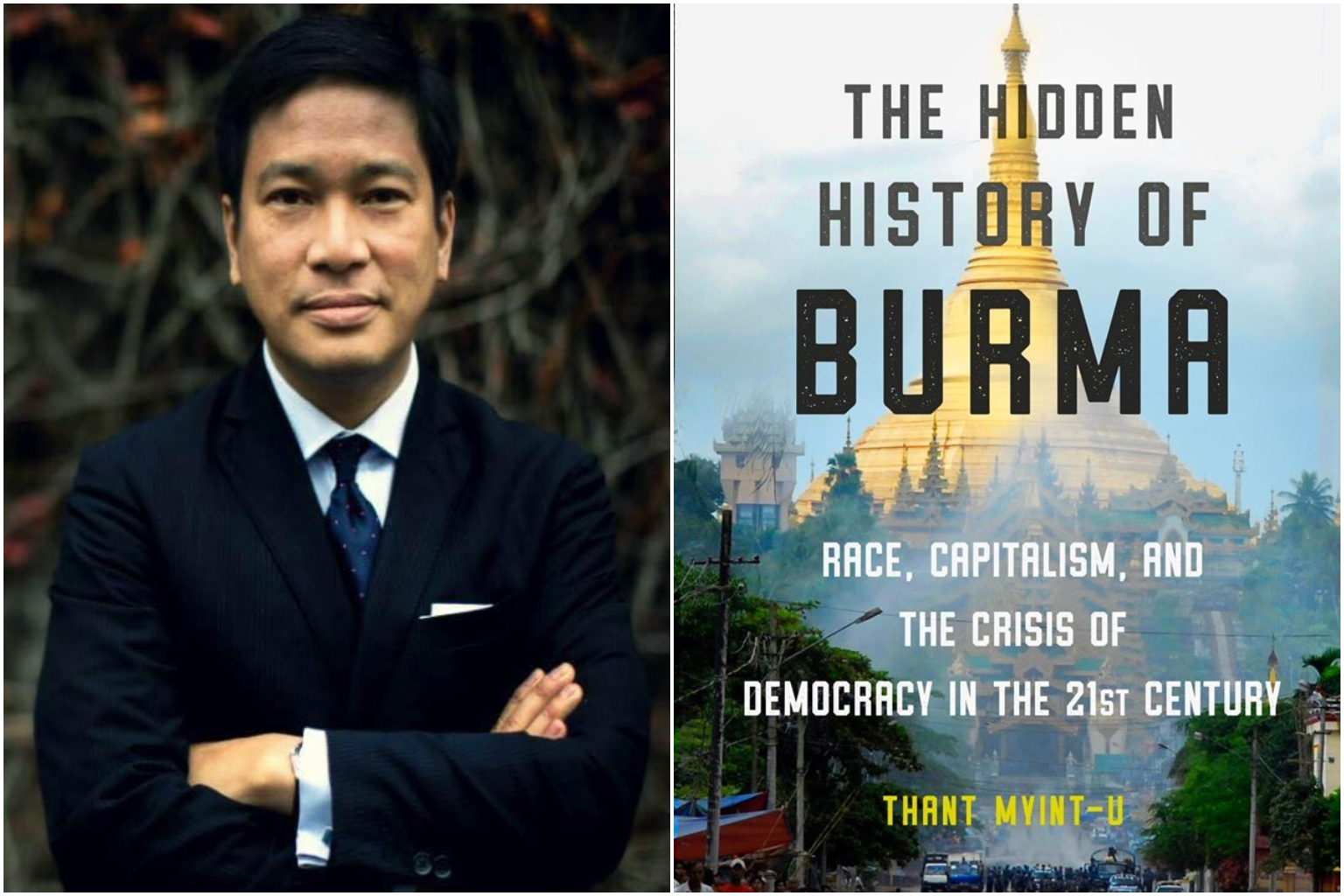“History Has No Hosts or Guests: Just People”
“Who Are the Real Natives? A Rebuttal to Historical Amnesia”
“Myanmar: A Shared Homeland, Not a Rented House”
ဘယ်သူက ဧည့်သည်။ ဘယ်သူက အိမ်ရှင် ဆိုတာတွေ ပြောနေမယ်ဆိုရင် သူ့စကားနဲ့သူ ဧည့်သည်ဖြစ်သွားမယ့် အန္တရာယ်ရှိပါတယ်
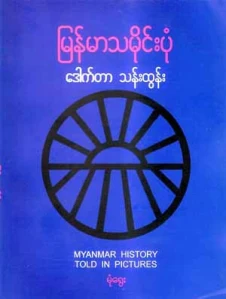
In a notorious public sermon, revered monk Thidagu Sayadaw (Ashin Nyanissara) was quoted in Voice Weekly claiming that Buddhism arrived in Myanmar 2,000 years ago, while Islam and Christianity only came with British colonialism, concluding therefore that Buddhists are “hosts” and Muslims and Christians are “guests.”
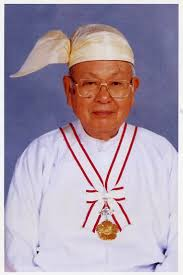
This is not just a historical error, but a morally dangerous distortion that risks inflaming ethno-religious divisions in a multi-faith, multi-ethnic nation.
Let’s examine the facts — not from political opinions, but from respected Burmese scholars and official state publications:
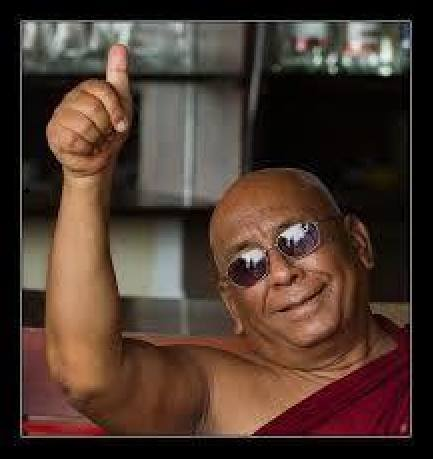
1. Islam and Christianity Have Deep Roots in Myanmar
Even the 1997 Defense Ministry publication (To Spread the Radiance of the Dhamma) states on page 65 that Islam has existed in Myanmar for 1,000 to 1,200 years. Page 58 further confirms that the earliest Christians — likely Nestorians — arrived around AD 1277, possibly alongside Kublai Khan’s Tatar forces.
That’s several centuries before British colonialism. Thus, Islam and Christianity are not foreign imports of empire, but religions with centuries of coexistence and contribution within Myanmar.
2. The “Bamar” Are Not Indigenous to Central Myanmar
According to the late Dr. Than Tun, Myanmar’s most respected historian, the Bamar entered central Myanmar in the 9th century AD, descending from Yunnan (Nanzhao) via the Thanlwin (Salween) River, and seizing fertile lands like Kyaukse and Minbu. They established Pagan (Bagan) as their center, conquering lands already inhabited by the Pyu, Mon, Thet, Palaung, Kadu, and others.
Their migration was not peaceful — it was a strategic military expansion, not unlike many other ancient state formations. So if “migrants” are to be seen as “guests,” then the Bamar themselves arrived as conquerors.
3. Thant Myint-U: The “Myanma” Identity Is Only 1,000 Years Old
In his 2015 historical essay, Thant Myint-U (grandson of U Thant, former UN Secretary-General) lays out a detailed reconstruction of the origins of the “Myanma” identity:
- The term “Mranma” (Myanmar) first appears in inscriptions only in the 11th century AD.
- The Bamar language, a branch of the Tibeto-Burman family, was likely brought by Nanzhao horsemen who entered the Irrawaddy valley during the 800s.
- These peoples possibly descended from the Dian and Yelang kingdoms of Yunnan, and may have mixed with the indigenous Pyu.
- The Bagan kings’ naming patterns, Buddhist practices, and cultural traits resembled Nanzhao and Dali Kingdom traditions more than those of earlier Pyu or Mon civilizations.
- There was no ethnic “Myanmar” or “Bamar” 2,000 years ago. The current identity is the product of historical fusion and migration, not eternal rootedness.
Conclusion: Let Truth Prevail Over Division
Religious and ethnic identities are not fixed, and historical legitimacy cannot be claimed through exclusionary narratives. Every major group in Myanmar — Bamar, Mon, Rakhine, Shan, Karen, Muslims, Christians, Hindus — descends from waves of migration, intermarriage, and mutual influence.
Calling Muslims or Christians “guests” while ignoring the Bamar’s own migratory and military origins is historically false — and morally irresponsible.
In an age of growing historical awareness and access to knowledge, it’s important we reject myths that divide and embrace the truth that unites: Myanmar is a shared homeland, and its rich diversity is its strength — not its weakness.
ဗမာဗုဒ္ဓဘာသာဝင်လာချိန် ဟောချက်အပေါ် တုံ့ပြန်ချက်
ဗမာဗုဒ္ဓဘာသာရောက်တာ ၂၀၀၀ နှစ်ရှိပြီ ဆိုတဲ့အကြောင်းကို ပြောတဲ့အခါမှာ မိမိကိုယ်တိုင်လည်း မယုံရဲမယုံကြည်ရဲပဲ ထုတ်ပြောရမှာပါ။ ပြောကြတဲ့အတိုင်းဆိုရင်တော့ ဗိဿနိုးဘုရားရှင်အချိန်ကတည်းက ဝင်လာတာနဲ့တူသွားပါတယ်။ ဒါပေမယ့် မြန်မာသမိုင်းဉာဏ်အကောင်းဆုံးလူတွေထဲက တစ်ဦးဖြစ်တဲ့ ဒေါက်တာသန်းထွန်းကတောင် ထိုသို့သော သက်သေမှန်ကန်တဲ့ မှတ်တမ်းတွေ မတွေ့နိုင်ခဲ့ဘူးလို့ ဆိုထားပါတယ်။
ရွှေတိဂုံဘုရားသမိုင်းကိုတော့ အနာဂတ်မှာလည်း ထပ်မပြောပါနဲ့။ ပြောရင် ပြောရင် အရှက်အပြစ်က မျက်စိမှောက်လာလိမ့်မယ်။ ငါပြောတာတွေအားလုံးကလည်း ရှာရခက်တဲ့ လူသိနည်းသိတဲ့ သုတေသနစာအုပ်တွေကို မဟုတ်ပါဘူး။ လူတိုင်း လွယ်လွယ်ကူကူ ဝင်ဖတ်လို့ရတဲ့ သာမာန်စာအုပ်တွေပဲ ကိုးကားပါတယ်။
အမှန်တော့ ဒီလိုစကားမျိုးတွေဟာ လက်ရှိပြဿနာတွေကို ဖြေရှင်းပေးဖို့ မဟုတ်ပါဘူး။ ပြဿနာတွေမဖြစ်အောင် ကာကွယ်ပေးဖို့လည်း မဟုတ်ပါဘူး။ တစ်ဖက်နဲ့တစ်ဖက် ကြားမှာ သွေးနထင်ထင် ဖြစ်အောင် လှုံ့ဆော်မဲ့ စကားတွေပါပဲ။
သေချာသိကြတာတစ်ခုကတော့ “မြန်မာလူမျိုး” ဆိုတာလည်း ခရစ် ၉ ရာစုနောက်ပိုင်းမှာ မြန်မာ့ဗဟိုဒေသကို ဗျူဟာကျကျ ဝင်ရောက်ပြီး ချီတက်နေထိုင်လာသူတွေဖြစ်တယ်။ မင်းဘူး၊ ကျောက်ဆည်ကို သိမ်းပြီး ပုဂံကို မြို့တော်ဖွဲ့ခဲ့ကြတာ။ ဒီအချက်ကတော့ မည်သူမျှ ငြင်းဆိုနိုင်တဲ့ သမိုင်းမဟုတ်ပါဘူး။
ဒါကြောင့် ဘယ်သူက ဧည့်သည်။ ဘယ်သူက အိမ်ရှင် ဆိုတာတွေ ပြောနေမယ်ဆိုရင် သူ့စကားနဲ့သူ ဧည့်သည်ဖြစ်သွားမယ့် အန္တရာယ်ရှိပါတယ်။
သမိုင်းကို မျက်နှာမလှန်နိုင်တဲ့ ဒီတိုးတက်လာတဲ့ သုတေသနခေတ်ကြီးမှာ၊ ဘာမှသိမသိ ပြောမိတာက လူတစ်ယောက်ကို ရယ်စရာဖြစ်စေဖို့လည်း ရှိပါတယ်။ ဒီတော့ သမိုင်းတရားအတိုင်း၊ အားလုံး ဂုဏ်သိက္ခာနဲ့ နားလည်မှုနဲ့ နေကြဖို့ပဲအရေးကြီးပါတယ်။

မြန်မာတို့ ဗဟိုမြန်မာနိုင်ငံအတွင်း ဝင်ရောက်နေထိုင်ခြင်း ရေးသူ- ဒေါက်တာသန်းထွန်း
အရှေ့တောင်အာရှ မြို့နိုင်ငံတွေကို ဝင်ရောက်လုယက် ဖျက်ဆီးခဲ့တဲ့ နန်ကျောင်စစ်တပ်ကြီးမှာ မန်းမန်တွေ ပါတယ်။ မြန်မာနိုင်ငံမှာ ခရစ် ၈၃၂ နဲ့ ၈၃၅ အတွင်း လုယက်ဖျက်ဆီးတယ်။ မန်းမန် တပ်သားတွေဟာ သတ္တိရှိတယ်။ သစ္စာရှိတယ်လို့ ဂုဏ်သတင်းကြီးတယ်။ မန်းမန် တပ်သားတယောက်ကို ဖမ်းဆီးရမိတဲ့အခါမှာ ဘယ်လိုပဲ ရိုက်နှက်စစ်ဆေးပေမယ့် စစ်တပ်ရဲ့ အရေးပါတဲ့ လိျှု့ဝှက်ချက်တွေကို မေးမရပါ။အဲဒီ လူတွေဟာ စစ်တိုက်ခိုက်တာကို အစကပဲ နှစ်သက်သူတွေ ဖြစ်ပေမယ့် နန်ကျောင်ခိုင်းသလို အကြာကြီး လှည့်လည် လုယက်တိုက်ခိုက်နေလို့ မဖြစ်နိုင်လို့ သဘောပေါက်လာတယ်။ ဒါကြောင့် ခရစ် ၉ရာစုနှစ် လယ်က စပြီး နန်ကျောင်အုပ်စိုးတဲ့ ပြည်နယ်ထဲက ထွက်ခွါလာခဲ့တယ်။ အရှေ့တောင် အာရှတခွင် နေရာအများကို ရောက်ဖူးပြီး ဖြစ်ပေမယ့် ဗဟိုမြန်မာနိုင်ငံ မြေပြန့်ဒေသတွေကိုသာ သူတို့ရဲ့ အိုးအိမ်သစ် ထူထောင်ဖို့ ကောင်းတဲ့နေရာလို့ ရွေးချယ်လိုက်တယ်။ ပူအိုက် စွတ်စိုပြီး ငှက်ဖျားရောဂါနဲ့ သေတတ်တဲ့ ရပ်ရွာဒေသကို ကြောက်လို့ ပူအိုက်ခြောက်သွေ့တဲ့ ဒေသကို ရွေးချယ်ခဲ့တာ ဖြစ်တယ်။
မြန်မာနိုင်ငံနယ်မြေကို သိတဲ့အပြင် ရှိရင်းစွဲလူမျိုးတွေအကြောင်းကိုလည်း သိလို့ သူတို့ဝင်လာတာကို မခုခံမဲ့ လမ်းက ဝင်တယ်။ သံလွင်မြစ်ကို စုန်ဆင်းပြီး မြောက်ပိုင်း ရှမ်းပြည်နယ်ကိုကျော် အရှေ့တောင်ထောင့်က ဖြတ်ဝင်တယ်။ အဲဒီနောက် စားသုံးရန် ကောက်ပဲသီးနှံ အများဆုံးထွက်တဲ့ ကျောက်ဆည်နဲ့ မင်းဘူးဒေသတွေကို သိမ်းယူတယ်။ မြောက်ဘက်မှာ မန္တလေးဝန်းကျင်၊ တောင်ဘက်မှာ မိချောင်းရဲဝန်းကျင်တွေမှာ အစောင့်တပ် ချထားတယ်။ ဒါကြောင့် မြန်မာတွေ ဝင်ရောက်လာတာဟာ စစ်တပ်နဲ့ ပြည်နယ်သိမ်းယူလိုက်တဲ့ သဘော ဖြစ်နေပါတယ်။ မွန်၊ ကဒူး၊ ပျူ၊ သက်၊ ပေါင်လောင်း နဲ့ စကြောလူမျိုးတွေ ရှိပြီးဖြစ်တဲ့ အလယ်ပိုင်း မြန်မာနိုင်ငံကို သိမ်းရာမှာ လွယ်ကူပါတယ်။ နိုင်ငံသစ်ရဲ့ ဗဟိုအရပ်ကို ပုဂံဟု သတ်မှတ်လိုက်တယ်။ ခရစ် ၉ ရာစုနှစ် အလယ်မှာ မြန်မာတွေက မြန်မာရဲ့ ခြောက်သွေ့တဲ့အရပ်မှာ အခြေချပြီး ဖြစ်သွားပါတယ်။
ခြောက်သွေ့အရပ်မှာ နေဖို့ ဆုံးဖြတ်တာဟာ မိုးများတာကို မကြိုက်လို့ ဖြစ်တယ်။ ပျူ၊ ပေါင်လောင်နဲ့ မွန်တွေကိုလည်း လွယ်လွယ်နဲ့ တိုက်ခိုက်နှိမ်နင်း နိုင်ပါတယ်။ မကြာခင် ရှိရင်းစွဲ လူမျိုးတွေရဲ့ ဓလေ့ ထုံးစံတွေကို မြန်မာတွေ နှစ်သက် သုံးစွဲလာတဲ့အတွက် အောင်နိုင်သူတွေ ကျဆုံးပြီလို့ ပြောဆိုတာ ခံရပါတယ်။ စစ်လိုလားသူ တွေဟာ ငြိမ်းချမ်းစွာ နေထိုင်တဲ့ တောင်သူဘဝကို ကူးပြောင်းလာပြီး ဗုဒ္ဓသာသနာမှာလည်း သက်ဝင်ယုံကြည် လာတယ်။ ဒါပေမဲ့ ပင်ကိုယ်သဘောဖြစ်တဲ့ စစ်အလေ့အကျင့် မပျောက်ဘဲ အရေးရှိရင် ရှိတဲ့အတိုင်း လူမြန်မြန် စုပြီး လက်နက်စွဲကိုင် တိုက်ခိုက်နိုင်ပါတယ်။ မြေကတုတ်နဲ့ စစ်ဆင်တိုက်နည်းကို အထူးကျွမ်းကျင် တယ်။
ကျောက်ဆည်နဲ့ မင်းဘူး အရပ်ဒေသတွေမှာ ရှိရင်စွဲ မွန်နဲ့ ပေါင်လောင်လူမျိုးတွေဆီက ဆည်ရေသောက် စပါးစိုက်နည်းကို ခပ်မြန်မြန် သင်ယူတတ်မြောက်ပြီးတော့ သူတို့လည်း တောင်သူ လယ်သမားတွေ ဖြစ်လာ ပါတယ်။ မကြာခင် တောရိုင်းတွေကို ခုတ်ထွင်ရှင်းလင်းပြီး စိုက်ပျိုးမြေ ဧရိယာကို ဆည်မြောင်းတွေနဲ့ ရေသွင်းပြီး ယပ်တောင်ဖြန့်လိုက်သလို ရွှေဘို၊ မုံရွာ၊ ပခုက္ကူ၊ စစ်ကိုင်း၊ မန္တလေးနဲ့ တောင်တွင်းဒေသတွေမှာ လယ်စိုက် ကြတယ်။ မြေသြဇာညံ့တဲ့ အရပ်တွေမှာ ထန်းဥယျာဉ်၊ ကွမ်းသီး ဥယျာဉ်တွေကို စိုက်တယ်။ တနှစ်မှာ တကြိမ် မြစ်ရေလျှံတဲ့ ဒေသတွေမှာ ပဲမျိုးစုံ စိုက်တယ်။ မြေညံ့လွန်းရင် ပြောင်းနဲ့ နှမ်းစိုက်တယ်။ စိုက်ပျိုးရာမှာ အလေအလွင့် မရှိအောင် မြေကို အသေးစိတ် အသုံးချတတ်ပါတယ်။ အဲဒီလို စိုက်ပျိုးတဲ့ မြေဧရိယာကို တတ်နိုင်သလောက် ကျယ်ပြန့်စေဖို့ နည်းအမျိုးမျိုးကို သုံးပါတယ်။ ဒါကြောင့် ခန်းခြောက်ဒေသ တခုလုံး ကောက်ပဲသီးနှံ ဖြစ်ထွန်းလာတာဟာ အလွန်ကြီးကျယ်တဲ့ အောင်မြင်မှုတရပ် ဖြစ်တယ်။ ဒီကနေ့ မြန်မာတွေဟာ မိမိတို့ရဲ့ ဘိုးဘွားတွေ အဲဒီလို အစွမ်းထက်ပါတယ်လို့ ဂုဏ်ယူရမှာ ဖြစ်ပါတယ်။
ကောက်ပဲသီးနှံ စိုက်ပျိုးတယ်ဆိုရာမှာ ကိုယ့်မိသားစု တနှစ် ဝမ်းစာရရုံလောက် စိုက်တယ်လို့ ဆိုနိုင်ပေမယ့် ငြိမ်းချမ်းစွာ နေခွင့်ရလာတဲ့အခါ မြန်မာလူဦးရေဟာ အလျင်အမြန် တိုးတက်လာတယ်။ ဒီတော့ စိုက်ခင်းနယ်မြေကို မချဲ့မဖြစ် ချဲ့ရပါတယ်။ အုပ်စိုးတဲ့ နယ်မြေကိုလည်း တိုးချဲ့နိုင်တယ်။ အရင်းမူလပြုတဲ့ ဒေသအပြင် တိုးလာတဲ့ ဒေသကို ပေါင်းစပ်လို့ ခရစ် ၁၁ ရာစုနှစ် အလယ်က စပြီး နိုင်ငံဟု ထင်ရှား ပေါ်ပေါက်ပြီး နိုင်ငံထူထောင်ရာမှာ ပထမဆုံး ထင်ရှားတဲ့ မင်းဟာ အနိရုဒ္ဓ ခေါ် အနော်ရထာမင်းစော ဖြစ်ပါတယ်။
မြန်မာနိုင်ငံမှာ ဆည်ရေသောက် လယ်စိုက်တာကို မွန်တို့က စတယ်လို့ သိရတယ်။ မြန်မာတို့က ဆည်ရေသောက် လယ်စနစ်ကို အလျင်အမြန် နည်းယူတတ်မြောက်ပြီး မြန်မာ့အလယ်ပိုင်း လွင်ပြင်အနှံ့ မြို့ရွာ တည်ထောင်ကာ ဆည်ရေသောက် လယ်တွေ တိုးချဲ့ခဲ့တယ်။ အပြင်းအထန် ကြိုးစားနိုင်လို့လည်း ခန်းခြောက်ဒေသနယ် တခုလုံးနီးနီး ကောက်ပဲသီးနှံ ဖြစ်ထွန်းလာတာ ဖြစ်တယ်။ ၁၁ ရာစုနှစ်မှာ နောက်ထပ် နယ်ချဲ့ နိုင်တဲ့အခါ မြန်မာနယ်ဟာ မြောက်ဘက်ကို ဗန်းမော်အထိ၊ တောင်ဘက်ကို ဘိတ် အထိ ကျယ်ပြန့်လာတယ်။ အဲဒီအခါက ပင်လယ်ရပ်ခြား ရောင်းဝယ်မှုမှာ အချက်အချာဖြစ်တဲ့ စလင် အငူကိုပါ ခေတ္တခဏ သိမ်းယူနိုင်တဲ့အထိ အောင်မြင်ခဲ့ပါတယ်။ အဲဒီလူ တောင်ဘက်ကို ချဲ့ထွင်နိုင်လို့ ခရစ် ၁၁၆၅ မှာ သီရိလင်္ကာနိုင်ငံနဲ့ စစ်မက်ဖြစ်ပွါးခဲ့ရပါတယ်။
ဒေါက်တာသန်းထွန်း
[မုံရွေးစာအုပ်တိုက်ထုတ် ဒေါက်တာသန်းထွန်းရဲ့ မြန်မာသမိုင်းပုံ စာအုပ်၊ ပထမအကြိမ်၊ ဇူလိုင်၊ ၂၀၀၄မှ ကူးယူဖော်ပြပါတယ်။]
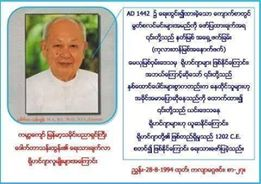
ဦးဉာဏိဿရ ပြောတဲ့ ဧည့်သည် မြန်မာတို့ ဗဟိုမြန်မာနိုင်ငံအတွင်း ဝင်ရောက်နေထိုင်ခြင်းဆရာတော်ပြောသွားတဲ့ ဧည့်သည်တွေအကြောင်း နည်းနည်း ပြောကြည့်မယ်။ ၈-ရာစု၊ ၉-ရာစု လောက်က သမိုင်းကြောင်း တချို့ကို မပြောသေးဘူး။ လောလောဆယ် ကျနော့်ကွန်ပျူတာမှာရှိတဲ့ စာအုပ် တစ်အုပ်က စာမျက်နှာကိုပဲ အရင်ကြည့်ဦးမယ်။ ဒီစာမျက်နှာက ဒေါက်တာသန်းထွန်းရေးတဲ့ `မြန်မာ့သမိုင်း မြေပုံများ´ ဆိုတဲ့ စာအုပ်ရဲ့ ပထမဆုံး စာမျက်နှာပါ။ (၁၇) ရာစုဆိုတာ ၁၆၀၀ ကျော်နှစ်များကို ဆိုလိုတယ်လို့ လူတိုင်းသိကြမယ်ထင်တယ်။ အင်္ဂလိပ်ဝင်လာတာ (၁၉) ရာစု .. ။ဦးဉာဏိဿရ ပြောတဲ့ ဧည့်သည်
ဒေါက်တာအရှင်ဉာဏိဿရ က ဒီလိုပြောသွားတာကို voice weekly မှာ ဖတ်လိုက်ရတယ်။
.. “တို့မြန်မာနိုင်ငံကို ဗုဒ္ဓဘာသာ ရောက်တာနှစ်၂၀၀၀ရှိပြီ။ ခရစ်ယာန်တွေ၊ အစ္စလာမ်တွေ ရောက်လာတာက အင်္ဂလိပ်ဝင်မှ ရောက်လာတာ။ အဲဒီနောက်မှ ရောက်လာတာ ဆိုတော့ နှစ်တစ်ထောင်မပြောနဲ့ တစ်ရာ တစ်ရာ့ငါးဆယ်လောက်ပဲ ရှိသေးတယ်။ ဒါကို ပြောရမယ်ဆိုရင် ဗုဒ္ဓဘာသာက အိမ်ရှင်နိုင်ငံပါ။ အဲဒီလို Invade လုပ်ပြီးတော့ ဝင်ရောက်လာကြတဲ့ ပုဂ္ဂိုလ်တွေ၊ Migrate လုပ်ပြီးတော့ ဝင်ရောက် လာကြတဲ့ လူတွေက ဧည့်သည်တွေ။”
